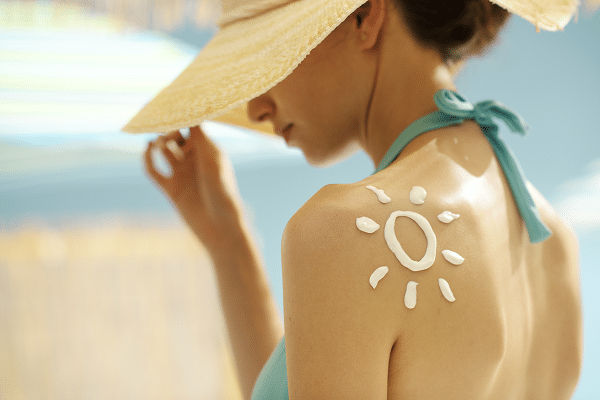Aging, an inescapable fact of life, inevitably leaves its mark on your skin in the form of wrinkles. This natural process, while a testament to experiences lived and lessons learned, can often cause concern, particularly for those who strive to maintain a youthful appearance. In a bid to combat these visible signs of aging, countless techniques and strategies have been developed. From innovative medical procedures to impactful lifestyle changes, there are myriad ways to reduce the occurrence of wrinkles. This blog post is devoted to shedding light on the most common procedures for reducing wrinkles.
Understanding The Causes Of Wrinkles

A multitude of factors contribute to the formation of wrinkles. Primarily, aging plays a significant role. As one grows older, the skin naturally loses its elasticity and becomes less resilient, leading to the formation of lines and creases. This process is exacerbated by reduced production of natural oils, resulting in drier and more fragile skin that is more prone to wrinkling.
Moreover, exposure to environmental factors, such as the sun and pollution, can accelerate the aging process of the skin. UV radiation, in particular, is notorious for breaking down the skin’s connective tissue – collagen and elastin fibers – which reside in the dermis. When these fibers break down, the skin begins to sag and wrinkle. Additionally, habitual facial expressions like frowning, squinting, or smiling can lead to fine lines and wrinkles as well. Each time a facial expression is made, a groove forms beneath the skin’s surface, and as the skin ages, it loses its flexibility and can no longer spring back in place, causing the grooves to become permanent features on the face.
Most Common Procedures To Reduce Wrinkles
The quest for wrinkle reduction has paved the way for a myriad of innovative medical procedures. Each approach varies in terms of process, effectiveness, cost, and potential side effects. This section provides a detailed insight into some of these popular methods.
Botox

Botulinum toxin, commonly known as Botox, has taken the beauty industry by storm due to its ability to smooth out wrinkles. It works by temporarily paralyzing the underlying muscles of the skin, thereby reducing the appearance of lines and creases. Primarily used for wrinkles on the face, it is most effective on dynamic wrinkles, which are lines that form from repetitive facial expressions like frowning or squinting.
It is important to remember that while Botox can be incredibly effective, the results are temporary. Typically, the effects of Botox last between three to six months, after which the skin will gradually return to its pre-treatment state. The potential side effects can include pain at the injection site, bruising, headache, and in rare cases, drooping eyelids or eyebrows.
Laser Skin Resurfacing

Laser skin resurfacing is a more intensive wrinkle-reducing procedure that uses concentrated beams of light to reduce the appearance of wrinkles and fine lines. The laser light removes the outer layer of skin while also heating the underlying layers. This dual action not only removes damaged skin but also stimulates the growth of new collagen fibers, leading to smoother, firmer skin.
Laser skin resurfacing can offer dramatic results, but it is important to be aware of the associated costs, recovery time, and potential side effects. The procedure tends to be more expensive than Botox or fillers, and the recovery time can range from a few days to a few weeks, depending on the intensity of the treatment. Some potential side effects can include redness, swelling, itching, and, in rare cases, scarring or changes in skin color.
Dermal Fillers

Dermal fillers offer another popular method for wrinkle reduction. Unlike Botox, which relaxes the muscles under wrinkles, fillers work by filling the line, crease, or area with one of several different substances. As a result, the trouble spots nearly disappear. Hyaluronic acid fillers, such as Juvederm and Restylane, are among the most popular types, offering a softened look that can last from six months to a year.
While dermal fillers can offer remarkable results, they do come with their own set of potential side effects. Some individuals may experience redness, swelling, or bruising at the injection site. There is also a risk of an allergic reaction, which may lead to itching, rash, or difficulty breathing. As with any procedure, it is vital to consult with a professional to discuss the potential risks and benefits.
Natural Ways To Reduce Wrinkles
In addition to medical procedures, there are natural ways to minimize the appearance of wrinkles. These include lifestyle adjustments such as maintaining a healthy diet, getting adequate sleep, and protecting the skin from excessive sun exposure.
Eat A Healthy Diet

A balanced diet rich in fruits, vegetables, lean proteins, and healthy fats can play a significant role in skin health. Foods high in antioxidants help combat free radicals, unstable atoms that can damage cells, causing aging and illness. Similarly, foods rich in vitamins A, C, D, and E, as well as certain B vitamins, can help maintain healthy skin and prevent premature aging.
Proper hydration is also essential for maintaining the skin’s elasticity and minimizing the appearance of wrinkles. Water helps to flush out toxins from the body, allowing for clearer, more youthful-looking skin. Meanwhile, overindulgence in foods high in sugar and unhealthy fats can promote inflammation and oxidative stress, both of which can speed up the skin’s aging process.
Adequate Sleep

Sleep is often called the body’s natural beauty treatment. During the deep sleep phase, the body goes into repair mode, producing more collagen and elastin – the proteins responsible for skin elasticity and strength. Poor sleep quality can lead to increased stress hormones in the body that can increase the severity of inflammatory skin conditions and accelerate the aging process.
Moreover, consistent lack of sleep can lead to chronic inflammation, undermining the skin’s ability to stay hydrated and supple. It is recommended that adults get between seven to nine hours of sleep per night to allow the body sufficient time to perform these vital functions.
Avoid Excessive Sun Exposure

Sun exposure is a leading cause of wrinkles. Harmful UV rays break down the skin’s collagen and elastin fibers, causing it to sag and wrinkle. Regular use of a broad-spectrum sunscreen with an SPF of at least 30, even on cloudy days, can protect the skin from these harmful rays.
In addition to sunscreen, wearing protective clothing such as wide-brimmed hats, long-sleeved shirts, and sunglasses can further shield the skin from the sun’s damaging rays. It is also worth noting that certain medications can increase the skin’s sensitivity to sunlight, so extra precautions should be taken when under such medication.
Conclusion
Age may bring wisdom, but it also brings wrinkles. However, through a combination of medical procedures and lifestyle adjustments, it is possible to manage these signs of aging effectively. Whether opting for botox, dermal fillers, laser skin resurfacing, or implementing dietary changes and good sleep habits, anyone can improve their skin’s appearance. Remember, protection from excessive sun exposure is a cornerstone of any anti-aging routine. While this blog post provides valuable information, it’s always recommended to consult with a dermatologist or skincare expert to get personalized advice.


